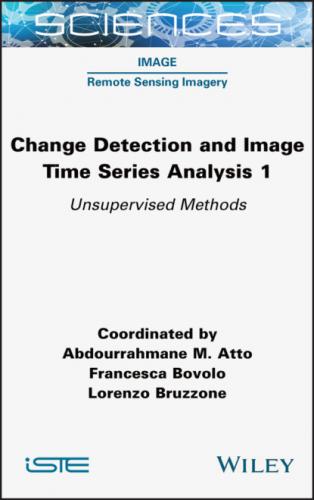Volume 2: Supervised methods
The second volume of this book is dedicated to supervised methods. Chapter 1 of this volume addresses the fusion of multisensor, multiresolution and multitemporal data. This chapter reviews recent advances in the literature and proposes two supervised Markov random field-based solutions: one relies on a quadtree and the second one is specifically designed to deal with multimission, multifrequency and multiresolution time series. Chapter 2 provides an overview of pixel-based methods for time series classification from the earliest shallow-learning methods to the most recent deep learning-based approaches. This chapter also includes best practices for reference data preparation and management, which are crucial tasks in supervised methods. Chapter 3 focuses on very high spatial resolution data time series and the use of semantic information for modeling spatio-temporal evolution patterns. Chapter 4 focuses on the challenges of dense time series analysis, including pre-processing aspects and a taxonomy of existing methodologies. Finally, since the evaluation of a learning system can be subject to multiple considerations, Chapters 5 and 6 propose extensive evaluations of the methodologies used to produce earthquake-induced change maps, with an emphasis on their strengths and shortcomings (Chapter 5) and the deep learning systems in the context of multiclass multilabel change-of-state classification on glacier observations (Chapter 6).
This book covers both methodological and application topics. From the methodological viewpoint, contributions are provided with respect to feature extraction and a large number of evaluation metrics for change detection, classification and forecasting issues. Analysis has been performed in both bitemporal images and time series, illustrating both unsupervised and supervised methods and considering both binary- and multiclass outputs. Several applications are mentioned in the chapters, including agriculture, urban areas and cryosphere analysis, among others. This book provides a deep insight into the evolution of change detection and time series analysis in the state-of-the-art, as well as an overview of the most recent developments.
July 2021
List of Notations
|
|
Image Time Series: time index k and pixel position (p, q) |
|
|
Vector Image Time Series: band/spectral index c |
|
|
Matrix Image Time Series: (polarimetric indices (u, v)) |
|
|
Sets of Natural Numbers, Integers, Real and Complex Numbers |
| μ, μ | Means of Random Variables and Random Vectors |
| C, Σ | Physical and Statistical Variance–Covariance Matrices |
| Probability Density Function |
1
Unsupervised Change Detection in Multitemporal Remote Sensing Images
Sicong LIU1, Francesca BOVOLO2, Lorenzo BRUZZONE3, Qian DU4 and Xiaohua TONG1
1Tongji University, Shanghai, China
2Fondazione Bruno Kessler, Trento, Italy
3University of Trento, Italy
4Mississippi State University, Starkville, USA
1.1. Introduction
Remote sensing satellites have a great potential to recurrently monitor the dynamic changes of the Earth’s surface in a wide geographical area, and contribute substantially to our current understanding of the land-cover and land-use changes
